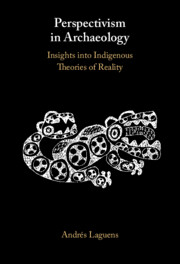Refine search
Actions for selected content:
122 results
How and Why the Quyllurit’i Pilgrimage Is Related to the Tupac Amaru Rebellion
-
- Journal:
- Latin American Research Review ,
- Published online by Cambridge University Press:
- 16 September 2025, pp. 1-19
-
- Article
-
- You have access
- Open access
- HTML
- Export citation
U-shaped power: Infantas and the ritual-political nexus of Formative-period monumentality in the Chillón Valley, Perú
-
- Article
-
- You have access
- Open access
- HTML
- Export citation
Las cenizas del Ave Fénix: Etnicidad y protesta social en el Ecuador poscorreísta
-
- Journal:
- Latin American Research Review ,
- Published online by Cambridge University Press:
- 13 June 2025, pp. 1-16
-
- Article
-
- You have access
- Open access
- HTML
- Export citation
Gateway to the east: the Palaspata temple and the south-eastern expansion of the Tiwanaku state
-
- Article
-
- You have access
- Open access
- HTML
- Export citation
Kaillachuro: early monumental architecture of the Titicaca Basin, 5300–3000 BP
-
- Article
-
- You have access
- Open access
- HTML
- Export citation
Two new species of Placomaronea (Candelariaceae: lichenized Ascomycota) in Peru, with a revision of secondary chemistry and cortical anatomy of Placomaronea, Candelina and Candelariella
-
- Journal:
- The Lichenologist / Volume 57 / Issue 2 / March 2025
- Published online by Cambridge University Press:
- 21 May 2025, pp. 61-81
- Print publication:
- March 2025
-
- Article
-
- You have access
- Open access
- HTML
- Export citation
Inca human sacrifice and sacred pilgrimages: spatial analysis of sites on the Chachani and Pichu Pichu volcanoes
-
- Article
-
- You have access
- Open access
- HTML
- Export citation
3 - An Ecology of Payments: Taxes, Cuotas, and Fees in Highland Bolivia
-
-
- Book:
- Anthropology and Tax
- Published online:
- 12 December 2024
- Print publication:
- 19 December 2024, pp 95-112
-
- Chapter
-
- You have access
- Open access
- HTML
- Export citation
3 - The Tradition of the Apotheosis in the Andes
-
- Book:
- Fallen From Heaven
- Published online:
- 12 December 2024
- Print publication:
- 19 December 2024, pp 124-172
-
- Chapter
- Export citation
The structural transformation of Ollantaytambo's Inka ecology under Spanish rule
-
- Article
-
- You have access
- Open access
- HTML
- Export citation
A review of the ecology and conservation of the Andean Flamingo Phoenicoparrus andinus and Puna Flamingo P. jamesi in South America
-
- Journal:
- Bird Conservation International / Volume 34 / 2024
- Published online by Cambridge University Press:
- 28 November 2024, e37
-
- Article
- Export citation
Geoglyphs in the Andean Central Coast: combining digital and traditional survey techniques
-
- Article
-
- You have access
- Open access
- HTML
- Export citation
Beyond Inca roads: the Redes Andinas project explores complex palimpsests of Andean road networks
-
- Article
-
- You have access
- Open access
- HTML
- Export citation
How Can Data Science Contribute to Understanding the Khipu Code?
-
- Journal:
- Latin American Antiquity / Volume 36 / Issue 2 / June 2025
- Published online by Cambridge University Press:
- 06 May 2024, pp. 497-516
- Print publication:
- June 2025
-
- Article
- Export citation
A Deposit of Silver Aquillas from the Site of Purun Llacta de Soloco, Amazonas, Peru
-
- Journal:
- Latin American Antiquity / Volume 35 / Issue 4 / December 2024
- Published online by Cambridge University Press:
- 16 April 2024, pp. 1045-1051
- Print publication:
- December 2024
-
- Article
-
- You have access
- Open access
- HTML
- Export citation

Perspectivism in Archaeology
- Insights into Indigenous Theories of Reality
-
- Published online:
- 01 February 2024
- Print publication:
- 08 February 2024
Managing pastoral landscapes: remote survey of herding infrastructure in Huancavelica, Peru
-
- Article
-
- You have access
- Open access
- HTML
- Export citation
Eyes of the machine: AI-assisted satellite archaeological survey in the Andes
-
- Article
-
- You have access
- Open access
- HTML
- Export citation
